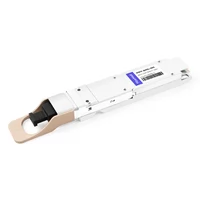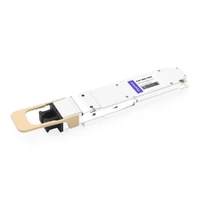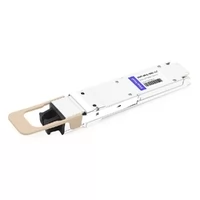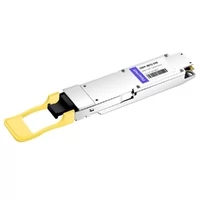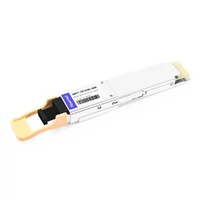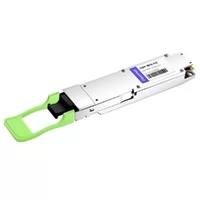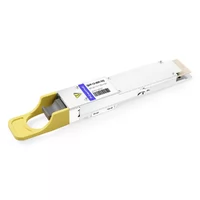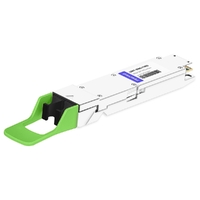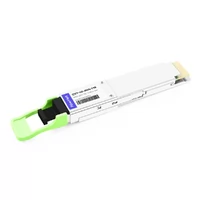As we move forward and develop our data centers, the most important thing to consider is whether they can send and receive information quickly enough. It’s vital for high-speed connectivity between these systems since organizations will keep expanding their digital infrastructure. In this article, you will learn how choosing an 800G optical transceiver becomes a game-changer while taking into account factors like existing hardware compatibility or transmission distance, among others, which have been influenced by 200g optical interface evolution and specifications laid out by MSA., also considering environmental conditions that need attention from operators of data centers when making decisions around such purchases because it ultimately affects performance needs as well as budgetary constraints but at the same time improves reliability on networks thus allowing more scalability options within them.
Table of Contents
ToggleWhat is an 800g Optical Transceiver?
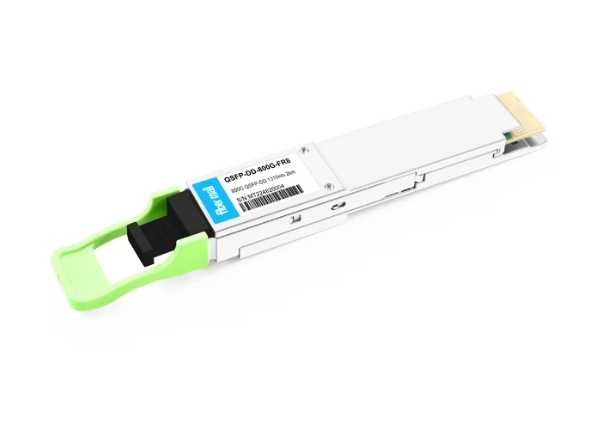
In today’s rapidly evolving digital landscape, the demand for an 800G optical transceiver has skyrocketed, driven by the explosion of AI, machine learning, and 5G applications. These advanced modules not only support unprecedented data speeds but also ensure seamless integration in hyperscale data centers. Whether you’re upgrading from 400G systems or building a new infrastructure, choosing the best 800G optical transceiver can significantly reduce latency and operational costs. At FiberMall, we specialize in providing reliable 800G optical transceivers that meet IEEE and MSA standards, helping businesses future-proof their networks.
Understanding the 800g Optical Transceiver Module
An 800G optical transceiver module is an important part of in high-speed data networks, designed to enable quick data transmission rates that can reach up to 800 gigabits per second. Advanced technologies like multiplexing and wavelength division are typically used by these modules to effectively handle the large amount of data being transmitted simultaneously. Compact and suitable for different form factors such as QSFP-DD and OSFP modules, the 800G transceivers are usually found in high-density data centers because they support advanced transceivers like 800G pluggable MSA., allowing them to fit into pre-existing designs of data centers easily. Supported protocols, maximum reach (which may differ depending on what type of fiber is used), and power consumption are key specifications worth considering since they affect overall network performance efficiency. Organizations can greatly improve their connectivity capabilities by using 800G optical transceivers, meeting the increasing need for bandwidth with low latencies in contemporary computerized environments.
Benefits of Using 800g Transceivers in a Data Center
When it comes to data centers, 800G transceivers have a lot of advantages. For one, these transceivers increase bandwidth capacity and allow for the effortless handling of growing data traffic – vital for high-performance applications and minimizing latency. Secondly, the small size of 800G transceivers means that more can fit into network infrastructure, making better use of physical space and being more cost-effective overall. Furthermore, because these modules use cutting-edge technology, they are also power efficient, reducing operational costs and smaller environmental impact. Last but not least important is how organizations can future-proof their network solutions by integrating 800G transceivers, ensuring that evolving demands will be met without overhauling all hardware extensively.
How Does PAM4 Work in 800g Modules?
PAM4 (Pulse Amplitude Modulation 4) is a sophisticated signaling technique used in 800G optical modules that increases data transmission rates while effectively utilizing bandwidth. Unlike traditional PAM (PAM2), which uses two levels, PAM4 employs four distinct signal levels to encode two bits of information per symbol. As a result, this method can transmit more information over the same physical medium without additional bandwidth. In 800G modules, PAM4 achieves efficient transmission by combining advanced multiplexing techniques with fast optics for high performance in demanding environments. This technique greatly reduces inter-symbol interference and preserves the integrity of signals for long-distance reach in optical fiber applications. It helps modern data centers meet their strict requirements while maximizing available resources.
Benefits of 800G Optical Transceivers in AI-Driven Networks
The 800G optical transceiver offers transformative advantages for modern networks, particularly in AI-enabled environments where data processing demands are immense. Here’s a breakdown of key 800G optical transceiver benefits:
- Ultra-High Bandwidth and Speed: Delivering up to 800 Gbps, an 800G optical transceiver handles massive data volumes from AI training models and real-time analytics, reducing bottlenecks in cloud computing.
- Energy Efficiency and Cost Savings: With advanced PAM4 modulation, these transceivers consume less power per bit compared to lower-speed alternatives, lowering cooling requirements and electricity bills—ideal for sustainable data centers.
- Scalability for Future Growth: Backward compatibility with 400G and 200G systems allows easy upgrades, making the 800G optical transceiver a smart investment for expanding enterprise networks.
- Enhanced Reliability and Low Latency: Features like forward error correction (FEC) ensure minimal packet loss, crucial for wireless systems and access networks supporting IoT and edge computing.
For organizations leveraging AI, an 800G optical transceiver from FiberMall can optimize performance while keeping costs in check.
What Are the Types of 800g Optical Modules?
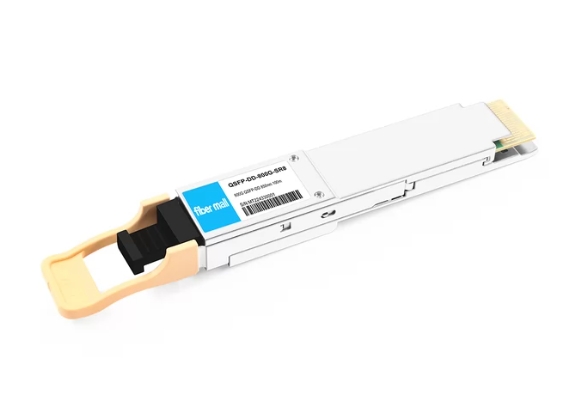
OSFP vs QSFP-DD: Choosing the Right Package
When choosing between OSFP (Octal Small Form-factor Pluggable) and 800G pluggable MSA, several things need to be considered, including compliance with the specifications of the 800G pluggable MSA. The leading path in modular connectivity solutions is QSFP-DD (Quad Small Form-factor Pluggable Double Density) for 800G optical modules. Although both form factors support the same standard, they differ in design and performance characteristics.
Designed for eight lanes of up to 100 Gbps each, OSFP modules have a total data rate capacity of 800 Gbps. They are larger, which creates better thermal performance while allowing for higher power delivery capabilities, which makes them suitable where high density and power efficiency are required. On the other hand, QSFP-DD modules have a smaller design but still provide eight lanes for data transmission like their counterparts above because they also allow backward compatibility with existing interfaces.
Ultimately, what determines whether one chooses OSFP or QSFP-DD will depend on specific requirements within any given network infrastructure, such as space constraints and needs regarding consumption of energy together with compatibility issues involving previously used equipment, among others, so careful consideration should be taken when looking at these different aspects thus ensuring organizations select packages best suited towards their respective deployments where performance balances operational efficiency effectively.
Features of 800g QSFP-DD800
Some important characteristics of 800G QSFP-DD modules that improve their performance in high-speed networking include:
- Single-channel technology with 100Gbps and higher is being developed for high data rates. Its influence on next-generation network design: Each QSFP-DD module supports high bandwidth by transmitting data rates up to 800 Gigabits per second (Gbps) across eight lanes, each delivering a maximum of one hundred Gbps. Cloud computing and similar applications that consume large bandwidth depend on this ability.
- Backward Compatibility: The backward compatibility between the QSFP-DD form factor and existing interfaces like QSFPS or QSFP28 is beneficial because organizations can upgrade their networks without overhauling them entirely, thus reducing the costs associated with upgrades and complexity during transition periods, even when moving towards pluggable MSA standards at the speed level of eight hundred gigabits per second.
- Compact Design: Compared to OSFP, among other types, these modules have smaller space requirements, particularly within the realm of optical interconnects operating at 800G speeds. Such smallness becomes vital where every inch counts, especially in data centers.
- Improved Thermal Management: These modules incorporate advanced thermal management technologies, which ensure efficient heat dissipation. This, in turn, supports stable operation under heavy loads while maintaining crucially needed overall system performance reliability.
- Support For Multiple Vendors: Since various vendors supply qsfp-dd modules, network operators have plenty of options, leading to possible cost efficiencies through competition and more innovation in optical module technology.
Organizations should evaluate these features based on their specific networking needs before choosing any 800G qsfp-dd module, as this will facilitate optimal functioning efficiency preparedness for future changes.
Exploring the 800g SR8 and 800g FR8 Modules
High-speed optical networking is represented by the 800G SR8 and FR8 modules, which serve different purposes in data centers and enterprise environments. These intra-data center connections use eight parallel lanes to achieve high data rates for multimode fiber in short-range applications. They typically support distances of up to three hundred meters over OM4 multimode fiber and four hundred meters over OM5.
On the other hand, the 800G FR8 module is designed for long-distance transmission using four optical lanes to enhance reachability while maintaining a high bandwidth. This kind of single-mode fiber inter-data center connectivity usually supports distances of about two kilometers. Both modules come with advanced features like digital monitoring capabilities or improved error correction, which ensure their reliable performance, especially under demanding conditions such as in an 800G 2xFR4 or LR4 network environment. Organizations should consider specific distance requirements to maximize network performance and scalability when choosing between these two types of SFP products: SR8 or FR8.
To help you decide between form factors, here’s a quick comparison table for 800G optical transceivers:
| Feature | QSFP-DD 800G Optical Transceiver | OSFP 800G Optical Transceiver |
|---|---|---|
| Size and Density | Compact, high-density deployment | Larger, better heat dissipation |
| Backward Compatibility | Yes (with QSFP28/QSFP) | Limited |
| Power Consumption | Up to 15W | Up to 18W |
| Max Transmission Distance | SR8: 100m; FR8: 2km | SR8: 100m; FR8: 2km |
| Ideal Applications | Space-constrained data centers | High-power AI clusters |
This table highlights why selecting the right 800G optical transceiver depends on your specific setup. For customized advice, contact FiberMall’s experts who can guide you through our inventory of both QSFP-DD and OSFP modules.
How to Choose the Right 800g Optical Transceiver?
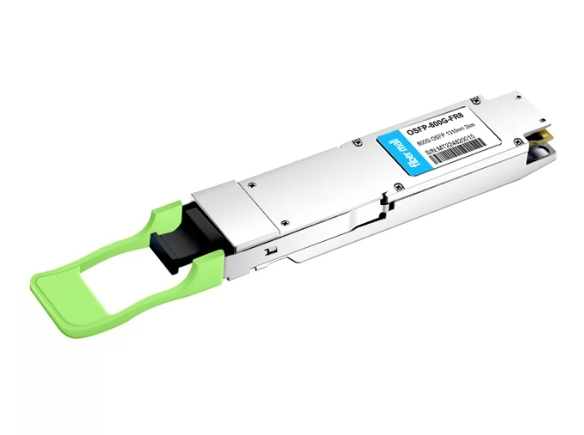
Compatibility with Existing Optical Networks
When choosing an 800G optical transceiver, one of the most important things to consider is how it will work with existing optical networks. Organizations can begin by looking at their current infrastructure, including connector types, deployed optical fiber (single-mode vs multimode), and network protocols. There are a variety of connectors available for use in different environments, such as MPO-16 or LC connectors on the 800G SR8 and the 800G FR8 modules.
Moreover, organizations must determine whether or not these devices will be compatible with their network switches and routers. Newer optical transceiver standards are typically supported by most modern networking equipment. However, it’s still crucial to check if your existing hardware recognizes them before deciding which module(s) to purchase. You should also keep power usage and heat dissipation in mind because they could affect total performance levels throughout your system. By making sure that chosen units work well together across all platforms, you can improve capabilities while protecting investments from obsolescence down the line.
Evaluating the Transmission Distance
When determining the transmission distance of 800G optical transceivers, it is necessary to examine the particular module designation because different ranges are suitable for different configurations. The 800G SR8 (Short-Range) modules are generally built for distances up to 150 meters over multimode fiber, making them perfect for data center interconnects and short-haul applications. On the other hand, the 800G FR8 (Extended-Range) modules can be used by single-mode fiber, which can reach longer distances of about two kilometers.
Effective transmission distances may vary widely depending on factors such as the quality of optical fibers used, environmental conditions, and any presence of signal-degrading elements within a network. Organizations need to thoroughly evaluate their unique use cases to ensure compatibility between selected optical transceivers with both present and future anticipated network requirements. In doing so, enterprises will realize optimal performance while ensuring reliable data communication across their networks.
Considering Power Consumption and Heat Dissipation
Power consumption and heat dissipation are key factors when choosing 800G optical transceivers, as they can directly impact network performance and hardware lifespan. According to recent studies and reviews from leading industry websites, the most efficient transceiver models operate in a power envelope of around 8 to 12 watts. Such performance-to-power ratios lower the total cost of ownership by balancing energy requirements with operational efficiency.
To prevent overheating, which can lead to diminished performance or failure of transceivers, suitable heat management solutions like sophisticated cooling systems or airflow optimization strategies must be employed. Thermal monitoring tools enable real-time tracking of temperature variations, ensuring safe working conditions for the devices. Organizations should consider these factors while designing their deployment strategy to achieve maximum functionality at minimum costs for their optical networking frameworks over an extended period.
What Are the Applications of 800g Optical Transceivers?
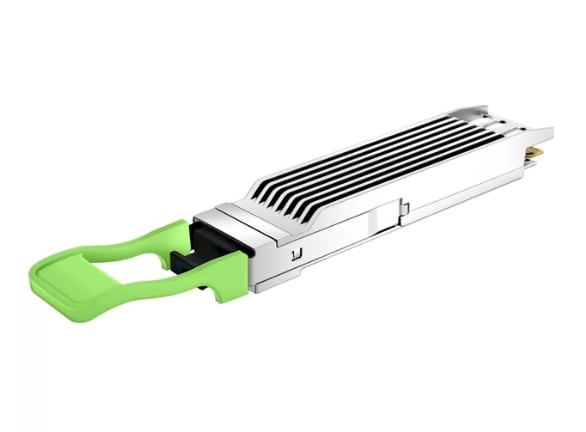
High-Speed Data Transmission in Modern Data Centers
Data centers today must have high-speed data transmission due to the increasing volume of data and the need for real-time processing. 800G optical transceivers are a solution that allows data centers to handle large workloads by increasing bandwidth significantly. According to leading industry players, these devices achieve high data throughput with low latency by using innovative modulation methods and DWDM technology. In addition, their small size helps maximize port density in environments where space is limited.
Moreover, it has been found that using 800G transceivers improves scalability in network designs because they can accommodate more cloud services and support trading applications with higher frequencies over time. When companies adopt this new technology, energy efficiency leads to lower running costs, which align with green initiatives while still meeting the strict performance requirements of modern-day data-hungry apps. Using these advanced transceivers, next-generation applications can be better supported in data centers wishing to remain competitive within the digital marketplace.
Support for Advanced Optical Interfaces
Introducing 800G optical transceivers requires advanced optical interfaces like single channel 100G and 200G, which are vital in ensuring efficient data transmission across various network architectures. The latest state-of-the-art optical interfaces include Quad Small Form-factor Pluggable Double Density (QSFP-DD) and Octal Small Form-factor Pluggable (OSFP), which are optimized for high-speed requirements of modern data centers. These interfaces utilize multiple modulation methods, such as Pulse Amplitude Modulation (PAM4), which effectively doubles the bandwidth over traditional Non-Return-to-Zero NRZ signaling without needing more fiber resources.
Besides, Multi-Source Agreements (MSAs) promote interoperability between different vendors, thus enhancing the scalability and flexibility of networking equipment. Maintaining compatibility between 800G transceivers and existing infrastructure is critical when the industry moves towards deploying higher-capacity networks for easier upgrades and transitions. This focus on advanced optical interfaces drives performance improvements and ensures that next-generation technology fits seamlessly into current frameworks, thereby contributing to improved sustainability and reliability within networks.
Utilizing 800g Ethernet for Enhanced Bandwidth
800G Ethernet is a breakthrough in high-performance networking, responding to the bandwidth needs of data-centric applications. This technology helps enterprises and data centers achieve throughput speeds of up to 800 Gbps with low latency and enhanced data transmission capabilities. Advanced modulation techniques like PAM4 allow for better use of current optical fiber infrastructure by increasing the data rate without having to do extensive upgrades.
In addition, migrating to 800G Ethernet can help improve spectral efficiency so operators can increase their network capacity. It also ensures minimal disruption during deployment because it is compatible with existing 400G and lower-rate installations. As organizations adopt more cloud computing, artificial intelligence, and Internet of Things technologies, the ability for growth provided by 800G Ethernet becomes important in sustaining performance while meeting future network demands. Therefore, this new standard will be pivotal in next-generation communications infrastructure through more effective bandwidth use and improved overall system performance.
Comparison of QSFP-DD and OSFP 800G
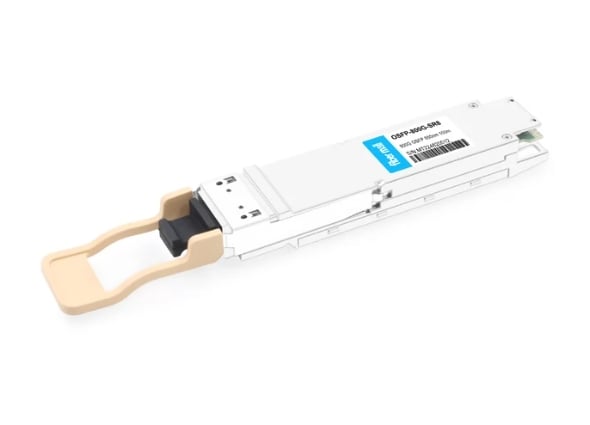
Performance Differences Between QSFP-DD and OSFP
QSFP-DD and OSFP are the two major form factors for 800G Ethernet transceivers. These two have different performance characteristics as well. QSFP-DD can support up to 800G throughput with four lanes of 200G or eight lanes of 100G using existing QSFP ports. It is also backward compatible with the 400G modules. On the other hand, OSFP uses eight lanes of 100G for its native support for 800G, making it a denser alternative than QSFP-DD and more accessible for designing new installations.
Thermal management is another area where OSFP has the edge over others because it’s larger, allowing better heat dissipation, thus making it suitable in high-density environments compared to other options like QSFP-DD that are often preferred by legacy systems due to their backward compatibility features enabling organizations to implement them without completely overhauling their current infrastructure and they work well with MSAs standards. Therefore, when choosing between these two types, one should consider deployment goals, thermal considerations, and existing network architecture since each brings unique strengths that influence data center environment performance differently based on specific requirements fulfilled during such processes.
Understanding OSFP Package Design
The OSFP packaging structure has been designed explicitly for high-performance 800G Ethernet applications requiring massive data movement and excellent thermal management. Unlike the QSFP-DD, which has a smaller footprint than the OSFP package design, it creates eight electrical lanes of 100G each to improve bandwidth and signal integrity. Also, its construction includes integrated heat sinks and advanced airflow channels to enhance cooling efficiency within dense network environments. The strong design of this system makes it easy to integrate into existing data center frameworks, thus offering room for future growth as network needs change over time. This feature is critical in situations where many connections have high densities or high bandwidths because they are increasingly common in today’s networking climates.
Advantages of QSFP-DD in High-Density Environments
In many ways, high-intensity networking environments benefit from the QSFP-DD module (Quad Small Form-factor Pluggable Double Density). Its small size allows for a maximum port density, which is critical for data centers that need to scale up and down within limited physical space. Another aspect of this technology is its ability to support data rates of up to 400G per port, thus optimizing bandwidth usage while meeting the ever-increasing demand for high-performance applications like cloud computing or large-scale data processing. Moreover, backward compatibility can significantly improve operational efficiency by letting organizations integrate a new system into existing infrastructures with little disruption. This feature also reduces total ownership costs over time since systems may be upgraded piecemeal instead of replacing an entire set at once. Finally, even when closely packed together, QSFP-DD modules have strong thermal management capabilities that allow them to cool efficiently under heavy loads while keeping things running smoothly.
Future Trends in 800G Optical Transceiver Technology
As data demands continue to surge, the future of 800G optical transceiver technology promises even greater innovations. Key trends include:
- Integration with Coherent Optics: Upcoming 800G optical transceivers will incorporate coherent detection for longer reaches (up to 10km+), perfect for metro networks.
- AI-Optimized Designs: Enhanced by machine learning algorithms, these modules will self-optimize for traffic patterns, reducing downtime in cloud environments.
- Sustainability Focus: Expect lower-power variants using silicon photonics, aligning with green data center initiatives.
- 1.6T Migration Path: 800G optical transceivers will serve as a bridge to 1.6T speeds, with modular upgrades minimizing disruptions.
Staying ahead with the latest 800G optical transceiver trends is essential—FiberMall is at the forefront, offering cutting-edge solutions for AI-enabled networks. Visit our blog for more insights or reach out to our support team for personalized recommendations.
Reference Sources
Frequently Asked Questions (FAQs)
Q: What are the key differences between 800G OSFP and 800G QSFP-DD transceivers?
A: The main difference is that these two transceivers have different sizes and electrical interfaces. The larger size of 800G OSFP may allow for better thermal management, while the compact design of QSFP-DD allows for greater density. They are equally important in data centers with high-speed optical communications at an 800 Gbps capacity.
Q: What is the 800G DR8 configuration, and where is it used?
A: It employs eight optical fibers to achieve a single-mode optical fiber data rate of up to 800Gbps. This configuration was designed specifically for high-performance interconnections within data centers, which require ultra-high bandwidths capable of handling massive amounts of information efficiently.
Q: How does FR4 contribute towards efficiency within a data center?
A: Four lanes, each operating at rates equal to or greater than two hundred gigabits per second (200Gbps), are used. Single-mode fiber optics can be used over long distances with reduced power consumption per module, thereby enabling higher levels of energy efficiency across multiple modules serving customers who require a maximum throughput of around one hundred gigabits per second (100Gbps).
Q: How do they play their roles in optical communication systems?
A: These types of transceivers are critical for achieving high-speed light transmission in modern data centers because they support large-scale low-power operation, which leads to lower overall heating output and improved cooling management practices.
Q: For standards relating specifically to 800G optics, why should I care about them?
A: Compatibility among equipment from different vendors is ensured by establishing specifications, such as signaling integrity requirements concerning physical layer protocols used during interactions between devices connected through such links.
Q: Are 800G optical transceivers compatible with the current 400G infrastructure?
A: Many 800G optical transceivers are made to be backward-compatible with the current 400G infrastructure. This ensures that existing investments in 400G devices and connectors are safeguarded while facilitating a seamless transition to 800G data rates and compliance with the MSA guidelines for pluggable modules.
Q: What advantages does OSFP modulation PAM4 FR8 deliver for high-speed optical communications?
A: For PAM4, the OSFP’s 800G FR8 modulation utilizes four-level pulse amplitude modulation (PAM4), which doubles the volume of data sent per optical signal. This modulating technique is essential in attaining high data transfer rates as required by this technology, thereby making it vital in fast-paced communication within data centers using optics.
Q: What exactly is an 800G PSM8 transceiver?
A: An 800Gbps aggregate rate is obtained through a parallel single-mode eight fiber optic cable via an 800Gbps PSM8 module. These modules have been designed specifically for short-range applications that require high-density latency connections within data centers.
Q: What drives the demand for 800G optical transceivers in data centers?
A: The reason behind this growing demand is that cloud computing, artificial intelligence, and other data-hungry applications need more and faster data transfer at higher bandwidths. To efficiently accommodate the increasing data traffic, these transceivers provide fast, reliable optical connections for data centers.
Q: What problems may arise with introducing 800G optical technology and what solutions can be used?
A: Power consumption, which leads to heat management, and preservation of signal integrity are some hurdles associated with the use of 800G optics. However, these can be overcome by employing new techniques in thermal design, such as PAM4 modulation, or adopting standards specific to compatibility testing for optimal performance across different models.
Related Products:
-
 OSFP-800G-SR8 OSFP 8x100G SR8 PAM4 850nm MTP/MPO-16 100m OM4 MMF FEC Optical Transceiver Module
$650.00
OSFP-800G-SR8 OSFP 8x100G SR8 PAM4 850nm MTP/MPO-16 100m OM4 MMF FEC Optical Transceiver Module
$650.00
-
 OSFP-800G-SR8D OSFP 8x100G SR8 PAM4 850nm 100m DOM Dual MPO-12 MMF Optical Transceiver Module
$650.00
OSFP-800G-SR8D OSFP 8x100G SR8 PAM4 850nm 100m DOM Dual MPO-12 MMF Optical Transceiver Module
$650.00
-
 OSFP-800G-SR8D-FLT OSFP 8x100G SR8 Flat Top PAM4 850nm 100m DOM Dual MPO-12 MMF Optical Transceiver Module
$650.00
OSFP-800G-SR8D-FLT OSFP 8x100G SR8 Flat Top PAM4 850nm 100m DOM Dual MPO-12 MMF Optical Transceiver Module
$650.00
-
 OSFP-800G-DR8 OSFP 8x100G DR PAM4 1310nm MPO-16 500m SMF DDM Optical Transceiver Module
$900.00
OSFP-800G-DR8 OSFP 8x100G DR PAM4 1310nm MPO-16 500m SMF DDM Optical Transceiver Module
$900.00
-
 QSFP-DD-800G-SR8 800G SR8 QSFP-DD 850nm 100m OM4 MMF MPO-16 Optical Transceiver Module
$850.00
QSFP-DD-800G-SR8 800G SR8 QSFP-DD 850nm 100m OM4 MMF MPO-16 Optical Transceiver Module
$850.00
-
 OSFP-800G-FR8 OSFP 8x100G FR PAM4 1310nm MPO-16 2km SMF Optical Transceiver Module
$1200.00
OSFP-800G-FR8 OSFP 8x100G FR PAM4 1310nm MPO-16 2km SMF Optical Transceiver Module
$1200.00
-
 QSFP-DD-800G-DR8 800G-DR8 QSFP-DD PAM4 1310nm 500m DOM MTP/MPO-16 SMF Optical Transceiver Module
$1300.00
QSFP-DD-800G-DR8 800G-DR8 QSFP-DD PAM4 1310nm 500m DOM MTP/MPO-16 SMF Optical Transceiver Module
$1300.00
-
 OSFP-800G-FR8D OSFP 8x100G FR PAM4 1310nm Dual MPO-12 2km SMF Optical Transceiver Module
$1100.00
OSFP-800G-FR8D OSFP 8x100G FR PAM4 1310nm Dual MPO-12 2km SMF Optical Transceiver Module
$1100.00
-
 QSFP-DD-800G-FR8 QSFP-DD 8x100G FR PAM4 1310nm 2km DOM MPO-16 SMF Optical Transceiver Module
$1500.00
QSFP-DD-800G-FR8 QSFP-DD 8x100G FR PAM4 1310nm 2km DOM MPO-16 SMF Optical Transceiver Module
$1500.00
-
 QSFP-DD-800G-FR8D QSFP-DD 8x100G FR/DR8+ PAM4 1310nm 2km DOM Dual MPO-12 SMF Optical Transceiver Module
$1450.00
QSFP-DD-800G-FR8D QSFP-DD 8x100G FR/DR8+ PAM4 1310nm 2km DOM Dual MPO-12 SMF Optical Transceiver Module
$1450.00
Related posts:
- Exploring the World of QSFP Transceivers: Cisco Compatible Solutions for MMF Optical Networks
- The Ultimate Guide to Fortinet Compatible Transceivers: Understanding Fortinet FN-TRAN-SFP+SR and More
- Everything You Need to Know About the Nokia GPON SFP
- The Ultimate Guide to 400G QSFP-DD Transceivers and Cables

